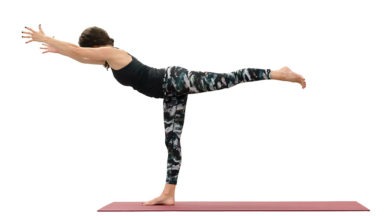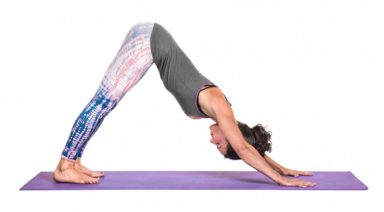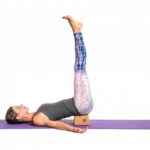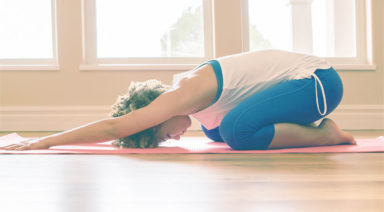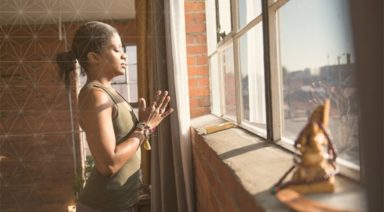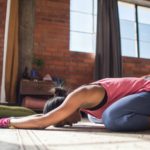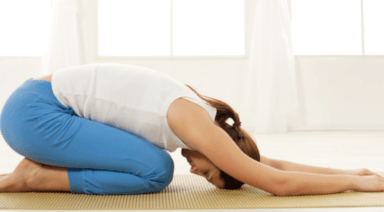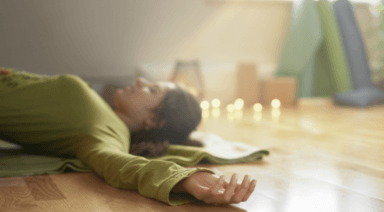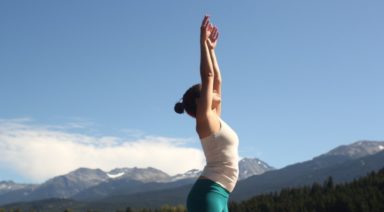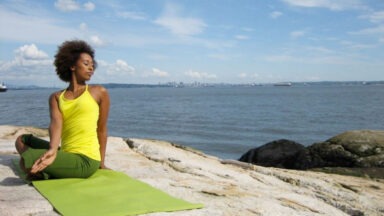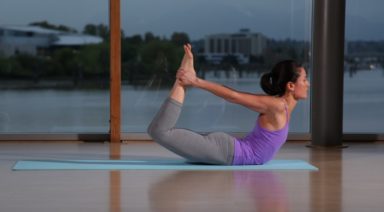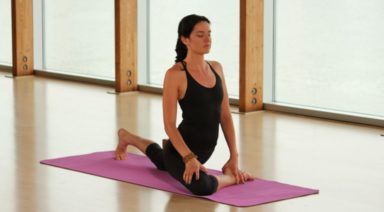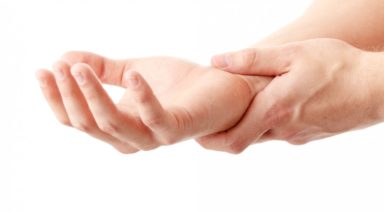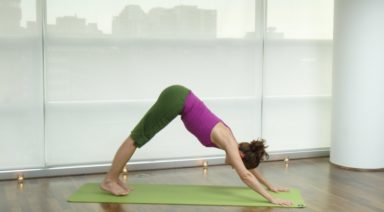Skandasana: Side Lunge Pose
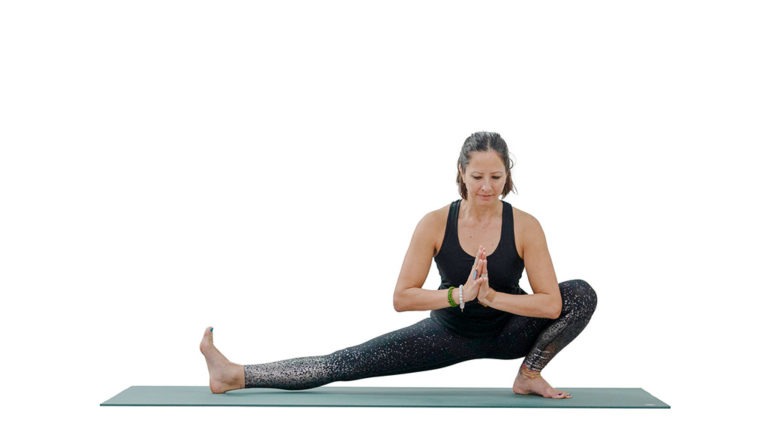
ADJUSTMENTS | BENEFITS | PREP POSES | SANSKRIT | STEPS
Side lunge is an aesthetically beautiful pose and a wonderful release for the legs and low back. This pose is sometimes referred to as skandasana.
Philosophy + Origin
Side lunge pose can be a wonderful way to begin to understand the concept of a “moving prayer,” especially when you allow the body to flow freely from one side to the other. While malas (prayer beads) are used in many spiritual practices as a way to help keep the mind engaged, repetitive physical movement can have the same effect. Whether you practice a flowing version of side lunge pose, or use the posture as part of a salutation, give your body and mind enough time to find rhythm and ease so that you can enjoy the benefits of a physical embodiment of prayer and meditation.

ADJUSTMENTS/MODIFICATIONS:
- Use a block underneath your seat to support your joints.
- Option to add a bind with your arms around the bent knee and lower back.
- For a more lunar or restorative version of the posture, allow your upper body to drape toward the ground with the arms relaxed.
STEP-BY-STEP:
- Begin standing with a wide stance, toes pointing toward the long side of your mat.
- Lengthen the spine and broaden across your collarbones. As you exhale, begin to bring your hands down to the mat, keeping the spine long.
- Bend your left knee and allow your hips to shift to the left. Press evenly through the sole of the left foot as you flex your right toes toward the ceiling. Engage your legs actively to safely deepen the stretch.
- Option to bring your hands off the floor, bringing them to your heart in anjali mudra (prayer gesture) or to any mudra of your choice.
- Hold the pose for several breaths before shifting your weight and flowing to the opposite side.

PREPARATORY POSES:
- Bound angle pose | Baddha konasana
- Wide-legged forward fold | Prasarita padottanasana
SEQUENTIAL POSES:
- Seated wide-legged forward fold | Upavistha konasana
- Garland pose | Malasana
- Half splits pose | Ardha hanumanasana
COUNTER POSES:
- Head to knee pose | Janu sirsasana
- Cow face pose | Gomukhasana
- Half lord of the fishes | Ardha matsyendrasana
BENEFITS:
- Strengthens the lower body.
- Stretches hamstrings, calves, and groins.
- Can promote balance and stability.
Legal Disclaimer Before participating in any exercise program or using any fitness products or services that may be described and/or made accessible in or through the Gaia Website and/or the Services, you should consult with a physician or other healthcare provider. Read more about Gaia’s Terms Of Use.
Virabhadrasana III: Warrior III Pose
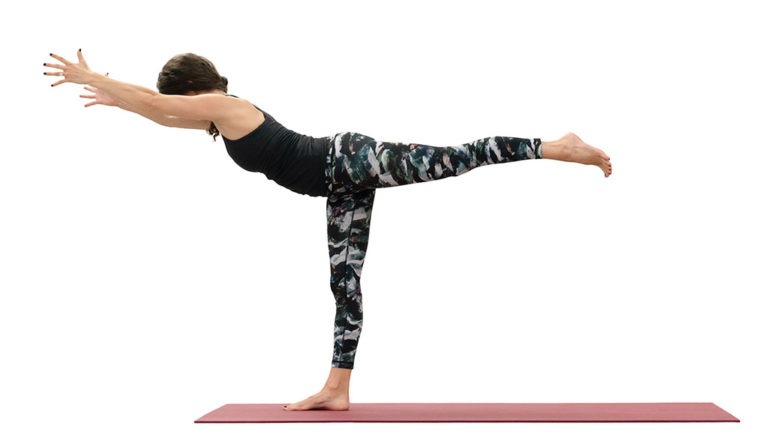
ADJUSTMENTS | BENEFITS | SEQUENCING | SANSKRIT | STEPS
Warrior III, or virabhadrasana (veer-ah-bah-DRAHS-ah-nah) III, is a challenging pose of balance and strength.
Philosophy + Origin
A fierce warrior, Virabhadra is often depicted as having a thousand heads, eyes, and feet. Draped in the skin of a tiger, this warrior wields a thousand clubs. In Virabhadra’s origin story, he is created from a single dreadlock from Shiva’s head, a manifestation of the rage he feels upon feeling like his true love has died. The shape of virabhadrasana III comes from this story, the moment when Virabhadra beheads the king Daksha and extends forward to place the head on a stake.
Despite the outward appearance and violent origin, this powerful pose is actually a great reminder of our own inner strength and the measures we would take in the name of true love.



